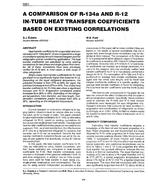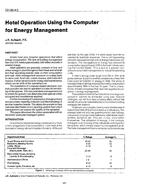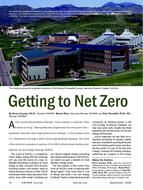With renewed interest in radiant floor-heating systems in the past decade, the issue of optimum control has become controversial. Friedlander (1986) and Adelman (1988) recommend outdoor reset control based on the principle that there is a direct, linear relationship between outside temperature and the required supply water temperature. ASHRAE (1987) also states that the supply water temperature should be varied in accordance with outside temperature due to the time lag between thermostat demand and heat delivery to the space. In contrast, MacCluer (1989) proposed the concept of proportional flux-modulation and claimed that the rate of heat sent to the floor slab must be controlled, not the temperature. To evaluate these issues, a comparative study of proportional flux-modulation and various types of temperature-modulation approaches was conducted through physical experiments in a laboratory setting during the 1990-91 heating season (Leigh 1991a, 1991b). The results show that proportional flux-modulation favourably compares with various types of temperature-modulation approaches by maintaining a stable indoor temperature around the setpoint and by demonstrating immediate response to any internal load disturbance. Temperature-modulation approaches show sensitivity to the reset ratio. Temperature modulation via flow inhibition shows sensitivity to the boiler water temperature. Indoor temperature feedback is highly recommended to help compensate for these potential errors and thus minimise the offset from the setpoint with temperature modulation.
KEYWORDS: heat flow, temperature control, heating, floor heating, radiant heating, water temperature, controls, comparing, room temperature, outdoor temperature, optimisation.
Citation: Symposium, ASHRAE Trans. 1994, Vol.100, Part 1,
Product Details
- Published:
- 1994
- File Size:
- 1 file , 1.4 MB
- Product Code(s):
- D-17880


